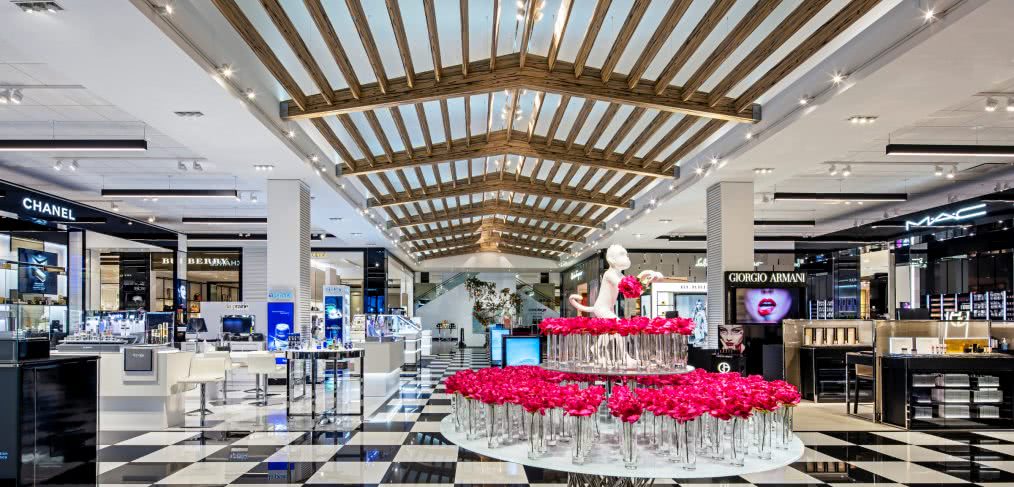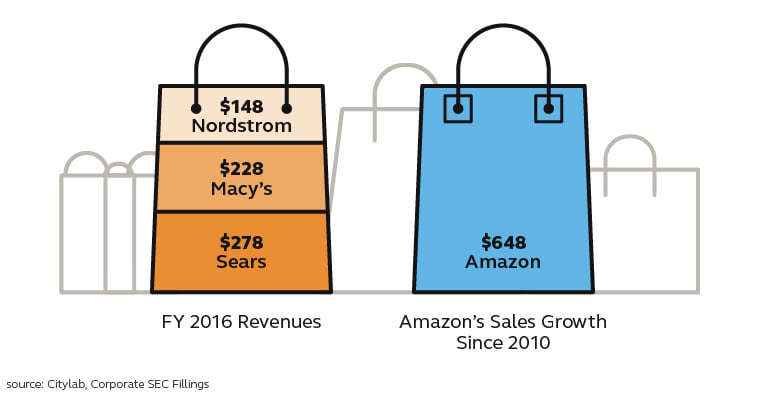
DATÜM: Reinventing the Department Store
Department stores are going through a period of transformation in the face of a rapidly changing retail market. What’s behind the change and where is it leading us?
A Changing Environment
The 1950s was the heyday of the American department store: the stately elegance of the retail environment supported by welcoming, attentive salespeople revolutionized the way we shopped. Fast forward to 2017, and news of closures have owners and operators rethinking traditional models. Is it possible to tap into consumer nostalgia and recreate the experience for today’s shopper? Or do we crave an entirely different experience? Data show that while consumer behavior and technology have changed drastically over the years, most people still prefer to shop in-store. Good news for developers and retailers, who can now view the department store of yesteryear as an opportunity for reinvention rather than simply a sign of the times.

This is not to say the challenges aren’t significant; long leases and low rent in exchange for reliable foot traffic and high sales is no longer a dependable trade-off for most department stores and the pressure is on. But history has shown that the darkest times can lead to some of the most innovative solutions:
- Nordstrom, a 155-year-old retailer, is aiming for $20 billion in net sales by 2020 [source: Racked]
- Five new department stores representing more than 650,000 square feet of space are set to open in Manhattan by 2018 [source: WSJ]
- 80% of all products in core department store categories are purchased offline [source: Forbes, 2017]
“Department stores need to be flexible so that they can evolve and remain competitive. CallisonRTKL’s in-depth knowledge of what retailers are looking for and our experience working with developers puts us in a unique position to solve these challenges.” –David Cassidy, SVP, CallisonRTKL
Anchor-Envy Trends
Here are a few ways that retailers are reimagining these large spaces:
Wellness-Forward
Saks has created an expansive, long-term wellness pop-up in its Fifth Avenue flagship known as The Wellery. Signposting the varying aspects of wellness, the store is divided into 22 separate sections straddling athleisure, fitness and beauty. It will offer new programs such as ConBody (with classes taught by former inmates), Reiki and massage in the Saks Studio.
Lounge & Listen
British department store Selfridges is adopting a hip and localized approach to social advocacy by temporarily transforming its London store’s 3,500-SF UltraLounge events space into a live music venue—a direct response to the capital’s dwindling club nights and live gig spaces.
Think Outside the Box
The Neiman Marcus Closet, a complimentary personal shopping service at the St. Regis in Miami, stocks rooms with the latest fashions from the US department store ahead of guests’ arrival. Guests disclose style inspirations, size and body type in advance in exchange for a personalized shopping experience.
Service First
London department store Harvey Nichols’s newly redesigned accessories floor, devised by London-based architects Virgile + Partners, features a Handbag Clinic run by a local repair specialist offering repair and restoration services, including cleaning or weather protection. The beauty department has extended hours, offering express treatments such as pick ‘n’ mix vitamin injections and 15-minute LED facials.
“Consumers shopping behaviors have changed tremendously with innovations in technology and information. Retailers and developers can harness huge pools of data and project how their businesses will need to adapt.” –David Cassidy, SVP, CallisonRTKL
Strategies for department stores
So what’s a shopping center developer and retailer to do? Here are a few ideas to keep in mind when reinventing anchor tenant space:
- Hybrid
We’ve seen developers turn these spaces into restaurants, grocers and movie theaters, but it’s not just about replacing your local department store with an alternative use and hoping that does the trick. It takes many anchors for a mall to be successful, and while this may work temporarily, it’s important to recognize that there isn’t a one-size-fits-all, single-use solution. Some of the more inclusive examples on the market are a hybrid mix of retail, culture and entertainment in one experiential destination.
- Agility & Scalability
There are many issues to consider when renovating or right-sizing a department store. Not only is it a costly endeavor, but finding retailers or brands to fill newly segmented space can be challenging. Keeping flexibility at the forefront of design drives spaces that can easily evolve and adapt more readily to the rapidly changing retail landscape. Target has shown that it understands the need to design to scale has developed a number of flexible-format stores to fit the urban landscape, rather than the city being built around it. This is one way to reimagine the traditional big box department stores into more agile destinations that fit their customers’ and city’s needs.
- Get Personal, Get Social
Sales strategies that focus on facilitating one-on-one connections between the brand and consumer are proving successful, particularly in the era of the social media influencer. Create a private space for customers to try out new cosmetics or receive a professional makeover for that perfect selfie. Build relationships with those rising stars in the blogosphere and feature a rotating sales display styled by them, creating a draw for their followers to shop their style. And don’t deny the importance of demographics: a little research can go a long way to getting the right mix of offerings that will resonate with customers.
